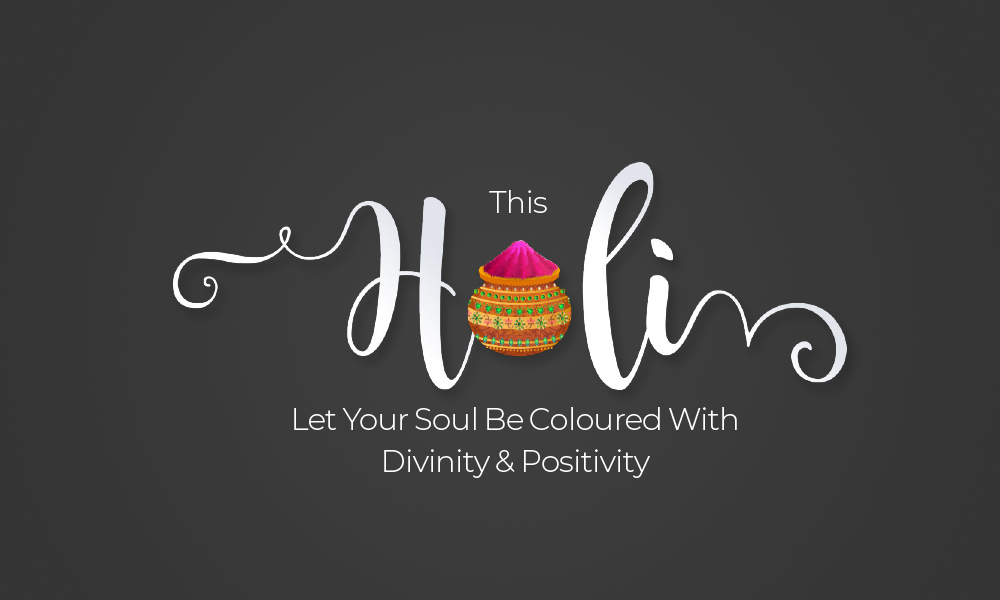Once again Holi ‘the festival of vibrant colors’ is here, and everyone is out to enjoy it. But let us examine what Holi really signifies and how we have distorted it by not knowing its real potential. Some people love the exuberance and vibrancy of Holi festival and some hate it for the distorted way many people tend to celebrate it. Holi is meant to depict social quality and cultural inclusiveness. It’s the time when new leaves have arrived on all trees and flowers of all hues and colors have sprung across. The sheer beauty of nature resplendent in its total glory is simply breath-taking. When outer nature is so vibrant and glorious how can man not dance in tune to this glory! And thus, evolved this beautiful festival.
An interesting anecdote related to Prahalada is associated with this festival. It so happened that Hiranyakashyapu, the asura king, after doing penances attained desired boons and became very powerful. He forbade everyone to worship lord Vishnu and declared himself to be the One to be worshipped. His younger son Prahalada did not heed his dictum. He said that lord Vishnu was his Supreme lord and he would not heed the advice of his father. Hiranyakashyapu grew furious and conspired with his sister Holika to burn his son in a pyre. Holika, who had boon of remaining indifferent to fire, sat in the pyre with Prahalada. But lo and behold! Holika got burnt and Prahalada emerged unscathed. Thus, traditionally Holi is celebrated to commemorate the victory of truth and good over falsehood and evil.
Holi colors made from natural ingredients have many therapeutic uses. Unfortunately, these days all the natural ingredients used for making the Holi colors have been replaced with the chemicals. Earlier vegetables and flowers were used to prepare colors, whereas today the blatant use of chemicals have given rise to severe eye allergies, headaches, skin cancer and sometimes paralysis as well as lung infections. The most prominent colors like Red contain mercury sulphate; Yellow contains barium chromate, zinc yellow, chrome yellow; Green contains copper sulphate; Silver or White contains paint, varnish, aluminum bromide; Violet contains chromium iodide; Blue contains copper, uric acid and Pink contains ferric oxide, lead chromate etc. leading to various skin problems. Whereas in the Vedic times for Red color Beet-root, Arandi bark and red Sandalwood was used. For Yellow color flowers of Palash, Tesu, Marigold, Pomegranate peel, Turmeric, Multan soil, Tulsi, Kesar and flowers of Jyotishmati were used. For green color Mehendi, Gulmohar leaves and Neem leaves (paste) were used. For Silver or White color Sandalwood was used, which have strong germ destroying power, thereby curing many skin problems and effective remedy for pimples and boils. Blue color was mostly prepared from the blue flowers of ‘Jakarand’ which is very effective in treating anxiety, fits, headache etc. Pink color was prepared with the flowers of Dhak and Sandalwood, which have curative powers and effective in treating leprosy, heat, urinary problems etc. Other positive effects of these colors being shining hair, good skin, vibrational effect on the respiratory system through the pores of the body, resistance from communicable diseases and infections.
All these suggest India’s extensive knowledge of Ayurveda in color therapy, which has existed since more than five thousand years and has been beautifully incorporated into social life through festivals. Our flag, our religions, our festivals, they all hold their origin in deeply ingrained truly practical spirituality. It is now upon us to either understand and celebrate Holi in its true spirit or just superficially follow a tradition with half-knowledge.


Nice
Very true
It’s a festival of colours & love. Let’s spread it in every one’s life